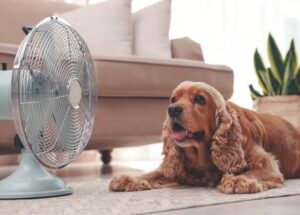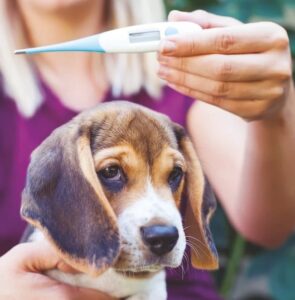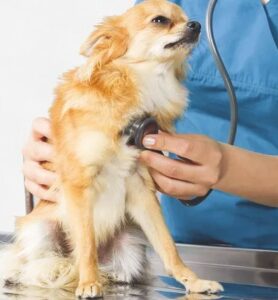Sizzling Dangers: Understanding Canine Heat Stroke
Summer is here and you need to be extra careful with all the necessary precautions to protect your furry friend and avoid the risks of heat stroke.
 As you need air conditioners and coolers to cool your body temperature, sunglasses to protect your eyes, sunscreen to protect your skin, cold water and cooling foods to lower your body temperature in summer,in the same ways your pet also need such contrivances in summers which prevents him from dehydration and sunburn. As pet parents you need to be extra cautious about the rising temperature. Heat stroke in dogs can be serious and can lead to organ failure or even death in extreme cases.
As you need air conditioners and coolers to cool your body temperature, sunglasses to protect your eyes, sunscreen to protect your skin, cold water and cooling foods to lower your body temperature in summer,in the same ways your pet also need such contrivances in summers which prevents him from dehydration and sunburn. As pet parents you need to be extra cautious about the rising temperature. Heat stroke in dogs can be serious and can lead to organ failure or even death in extreme cases.
The following categories of pet are at an increases risk –
- Brachycephalic breed (pushed in nose) like Pugs, Bulldogs, Boston Terrier, Golden Retrievers and Labradors
- Pets who are suffering from cardiac and respiratory conditions
- Geriatric (elderly) or ill pets
- Obese pets
- Pets who have recently shifted to hotter climates
- Pets who excessive run and exercise
- Pets who have suffered heat stroke previously
Sunshine and safety – tips to keep your pet happy and safe in summers
 Here are some dos and don’ts you should keep in mind as a pet parent to sail through harsh summers.
Here are some dos and don’ts you should keep in mind as a pet parent to sail through harsh summers.
- Don’t leave your pet in the car even if it is parked in a cool and shaded place. The temperature inside the car can go up really quickly and increase the risk of heat stroke.
- Always provide fresh and clean drinking water to your pet in adequate amounts. If possible, keep two bowls so that if one is knocked over, your pet can have water from the other bowl.
- Travel with your pet in a well-ventilated car and avoid travelling during the middle of the day when temperature is too high.
- Don’t take your pet for a walk, run, or exercise during day time when temperature is too high. Keep the walk sessions for early morning and late evening.
- Keep your pets indoors with proper air conditioning or fans to keep their body temperature under control.
- Wet dog food can help in increasing water intake during summers. You can ask your vet about the best wet dog food for suitable for your furry friend.
Taking care of temperature troubles
 The only effective method of cooling/thermoregulation in dogs is panting. Humans can sweat from almost everywhere because we have sweat glands. But dogs only produce sweat from areas that are not covered with fur, like through their nose and paw pads. You need to be careful because your pet wont stop playing even in high temperature until his body cannot take the heat and exertion. This may lead to a heat stroke and other issues like – brain damage (temporary or permanent), muscle damage, bleeding disorders, organ failure (if the body temperature exceeds 43°C), liver and kidney failure, ulcers in stomach and intestines etc.
The only effective method of cooling/thermoregulation in dogs is panting. Humans can sweat from almost everywhere because we have sweat glands. But dogs only produce sweat from areas that are not covered with fur, like through their nose and paw pads. You need to be careful because your pet wont stop playing even in high temperature until his body cannot take the heat and exertion. This may lead to a heat stroke and other issues like – brain damage (temporary or permanent), muscle damage, bleeding disorders, organ failure (if the body temperature exceeds 43°C), liver and kidney failure, ulcers in stomach and intestines etc.
Scorching signs
 Lookout for these signs and symptoms that might indicate a heat stroke –
Lookout for these signs and symptoms that might indicate a heat stroke –
Anxious expression or staring appearance
- Heavy panting
- Excessive salivation
- Elevated rectal temperature
- Skin feels warmer than usual
- Bright red gums
- Lying flat on cool surfaces
- Collapsing, stumbling or falling down
- Vomiting
- Seizures
Heat stress SOS
 If you notice any of these signs and symptoms, take your pet to the vet immediately. The treatments can vary depending upon your pet’s age, breed, overall health condition, and severity of the stroke. The different treatments that your vet may administer can be – cold water enema or intravenous fluid. Seizures are treated with appropriate anticonvulsants. Antibiotic therapy is best to protect gastrointestinal tract.
If you notice any of these signs and symptoms, take your pet to the vet immediately. The treatments can vary depending upon your pet’s age, breed, overall health condition, and severity of the stroke. The different treatments that your vet may administer can be – cold water enema or intravenous fluid. Seizures are treated with appropriate anticonvulsants. Antibiotic therapy is best to protect gastrointestinal tract.
The key to successful management and treatment includes rapid recognition with protocols aimed at rapid cooling and support of the affected body systems. Heat stroke can result in multi-organ dysfunction that can be life-threatening, so act quickly and do not delay the treatment process.
(Dr Hitesh Raje – Veterinary Officer, RAPTC Madhya Pradesh Police, Indore)

